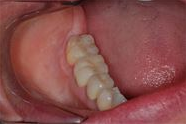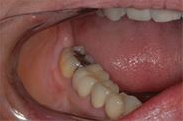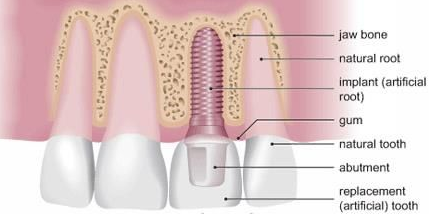Restorations
Tooth decay has dramatically decreased in patients due to awareness, but there are still instances where patients can suffer from infection. With improved techniques, modern technology and continuous education, our office is able to offer more options in order to restore your teeth back to your natural look, including their shape, size, appearance and function. If you believe that you need any restoration to your smile, you’ll always have the ability to discuss with us what the best options are for you that will improve more than just the way your teeth look, but your oral and dental health, as well.
Fillings
This is the most common restorative procedure, available for all ages. After the decay is removed from your tooth, there needs to be something placed in that area so your tooth has the ability to function like it used to and continue to stay strong. There are two options for fillings:
 White (Composite) Fillings: We use composite restorations a majority of the time in our office. Patients prefer them because they're more attractive than the alternative, amalgam fillings. These fillings are made out of strong composite resin that's matched to the surrounding tooth color so it looks like nothing has changed.
White (Composite) Fillings: We use composite restorations a majority of the time in our office. Patients prefer them because they're more attractive than the alternative, amalgam fillings. These fillings are made out of strong composite resin that's matched to the surrounding tooth color so it looks like nothing has changed.
Crowns
A crown is made to fit over the entire top of your tooth. While this is a cosmetic service, it is also a restorative one and can be the best option for patients. Crowns cover, protect, seal and strengthen the tooth to fight against decay. Typically, crowns are needed when a filling isn’t enough to protect the tooth.

 The bridge is anchored to the surrounding teeth of the empty space called abutments. With these stable teeth, the bridge is given a strong support. The replacement tooth, also known as the pontic, is filled into the mising space. Your cleaning routine is slightly alerted in terms of flossing, but your brushing is no different than before.
The bridge is anchored to the surrounding teeth of the empty space called abutments. With these stable teeth, the bridge is given a strong support. The replacement tooth, also known as the pontic, is filled into the mising space. Your cleaning routine is slightly alerted in terms of flossing, but your brushing is no different than before.




